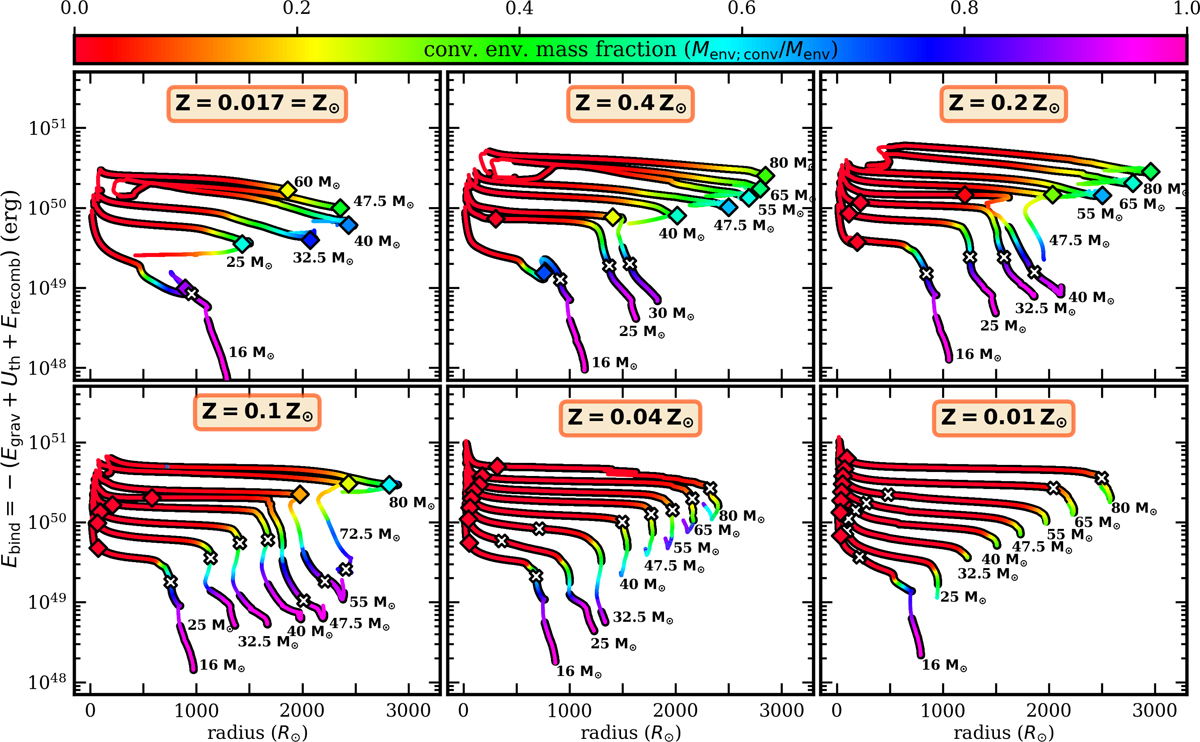Fig. 1.

Envelope binding energies Ebind of massive giants (i.e., the post-MS part of the evolution) as a function of their radius for six different metallicities (selected models from Klencki et al. 2020). See Fig. C.1 for a figure including all the masses in the grid and Fig. C.3 for a figure showing all the corresponding λCE values. Ebind combines the gravitational potential energy as well as the internal energy (including the recombination terms); see Eq. (3). Only post-MS evolution is shown. Colors indicate what fraction of the envelope mass is in the outer convective zone (i.e., Menv; conv/Menv). Diamonds (same coloring) and white crosses mark the onset and end of core-helium burning, respectively. Part of the evolution when the radius is increasing beyond the previously largest radius that has been reached, i.e., the part relevant for RLOF and mass transfer, is shaded in black. Development of a deep outer convective envelope layer can lead to a very significant decrease in the binding energy, unless the giant is a HG star (i.e., before the core-helium ignition); see Sect. 3.4 for details.
Current usage metrics show cumulative count of Article Views (full-text article views including HTML views, PDF and ePub downloads, according to the available data) and Abstracts Views on Vision4Press platform.
Data correspond to usage on the plateform after 2015. The current usage metrics is available 48-96 hours after online publication and is updated daily on week days.
Initial download of the metrics may take a while.


